"Michelangelo, Caravaggio, & Bernini" Mifsud Final
1/141
Earn XP
Description and Tags
Name | Mastery | Learn | Test | Matching | Spaced |
|---|
No study sessions yet.
142 Terms
who completely rebuilt the facade on Via del Corso
Gabriele Valvassori in 1731-1731
example of Rococo in Baroque
walls & windows
Michelangelo was primarily an
architect
exedra
semicircular recess
The Statue of St. Bruno is
Neoclassical
Galleria Doria-Pamphilj Image
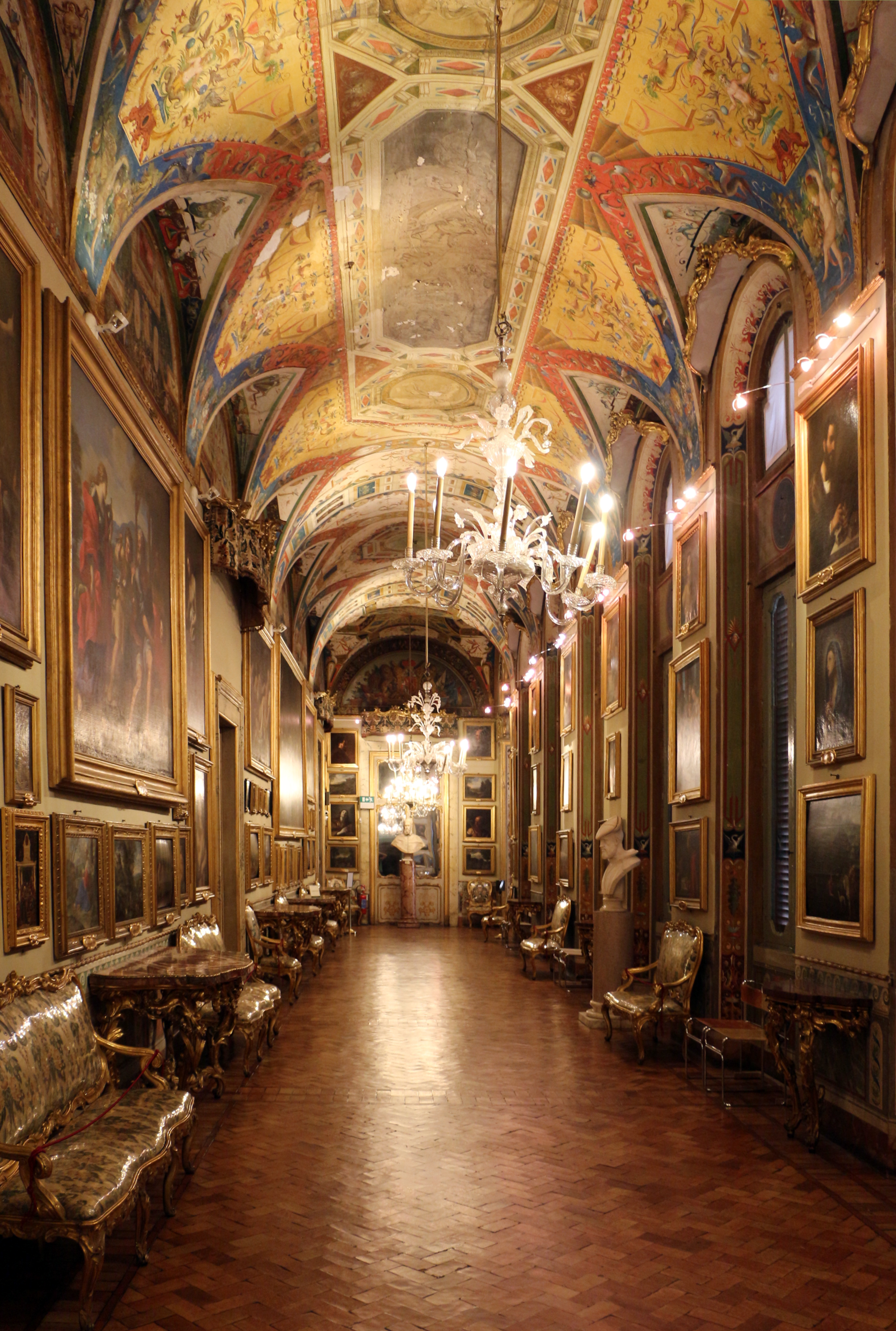
Rococo (1740-1770)
delicate & fancy
shellwork, foliage, drapery, garland, swag
Portrait of Innocent X- Diego Velázquez (1650) Image
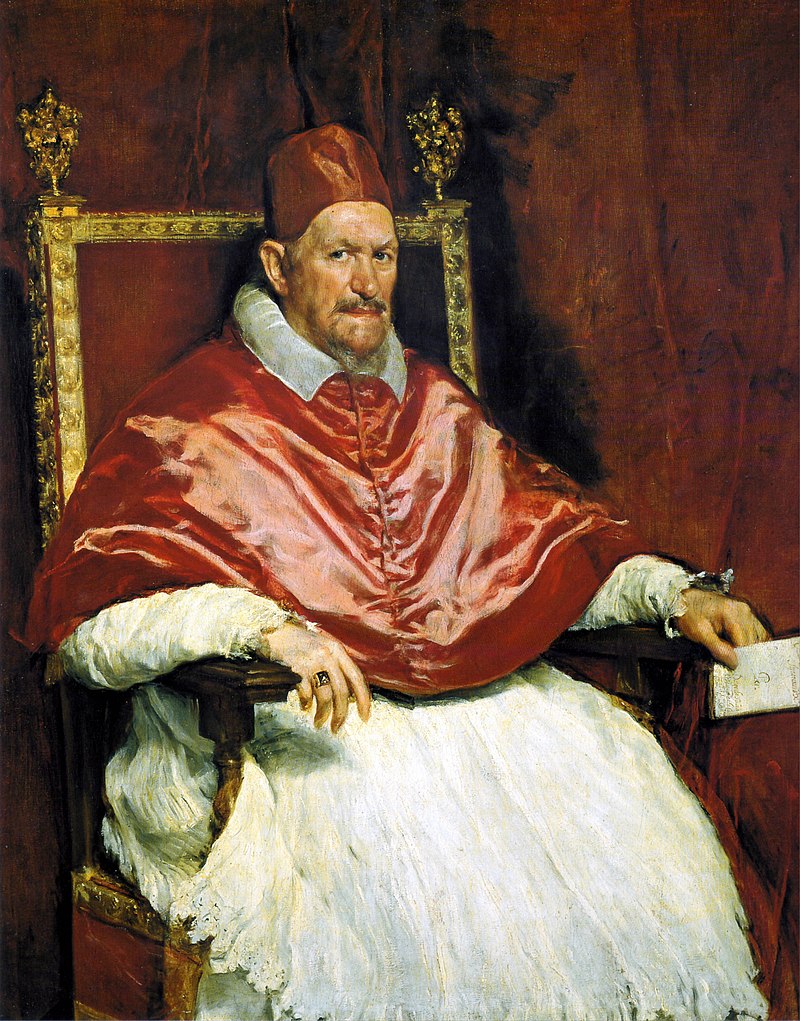
Portrait of Innocent X- Diego Velázquez (1650)
triumph of naturalism in different textures of face and hands, satin, linen, velvet
Olimpia Maidalchini
“was intelligent, although not deeply cultivated; her greatest interest was hunting. She was a determined woman, somewhat mannish and possessed two great faults: she was grasping and ambitious for power”
Portrait of Olimpia Maidalchini - Alessandro Algardi (1646/7) Image

how was oil pigment applied on Portrait of Innocent X (1650)
Velàzquez applied with fluid brushstrokes
derived from Venetian school
Rest After the Flight into Egypt is considered Caravaggio’s 1st..
religious work dating from the earliest part if his career in Rome
Rest After the Flight into Egypt- Caravaggio- 1595-96 Image
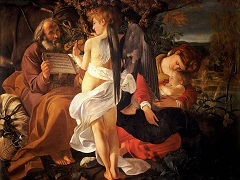
Rest After the Flight into Egypt was notable for its
unique composition
Rest After the Flight into Egypt scene
semi-nude angel Gabriel cuts the painting into two separate scenes with his placement in the middle of the foreground but his back to the viewer
Repentant or Penitent Magdalene- Caravaggio (1595/96) Image

why is Repentant or Penitent Magdalene unique
most scenes from previous centuries Magdalen is often pictured semi-nude
how is Repentant or Penitent Magdalene dressed in painting
woman of Caravaggio’s time next to her “vanities”
oils
pearls
jewelry
Landscape with the Flight into Egypt- Annibale Carracci (1604)

Landscape with the Flight into Egypt shows an important example of a type of
17th Century landscape painting in which the figures appear in an idealized landscape
Landscape with the Flight into Egypt was idealized because
Carracci studied the countryside around Rome and then recreated water, trees, mountains, and sky into a carefully constructed scene
Landscape with the Flight into Egypt has a human presence that is strongly evident
holy family, boatman, Shepard, farmer, and the fortress-like architecture
For the Villa Borghese the patron
wanted a unique and seperate building to specifically showcase his art collection, entertain members of his personal entourage, and astound out-of-town guests
Cardinalis Nepos means
Cardinal Nephew
the Galleria Borghese is referred to
rooms of unique art collection
Cardinal Scipone commisoned Flamino ponzo as
archietct of Villa Borghese
Young Bernini
privileged son of a Papal sculptor
began studying ancient sculptures in the Vatican
sketching from both antiquity and the works of Renaissance artists
Bernini’s 1st complete work in marble that we have to date
The Goat Amalthea with the Infant Jupiter and a Faun
The Goat Amalthea with the Infant Jupiter and a Faun- Bernini (1609) Image

The Goat Amalthea with the Infant Jupiter and a Faun was made when Bernini was
10/11 years old
Bernini’s first commission
Aeneas, Anchises, and Ascanius Fleeing Troy
Aeneas, Anchises, and Ascanius Fleeing Troy- Bernini (1618) Image
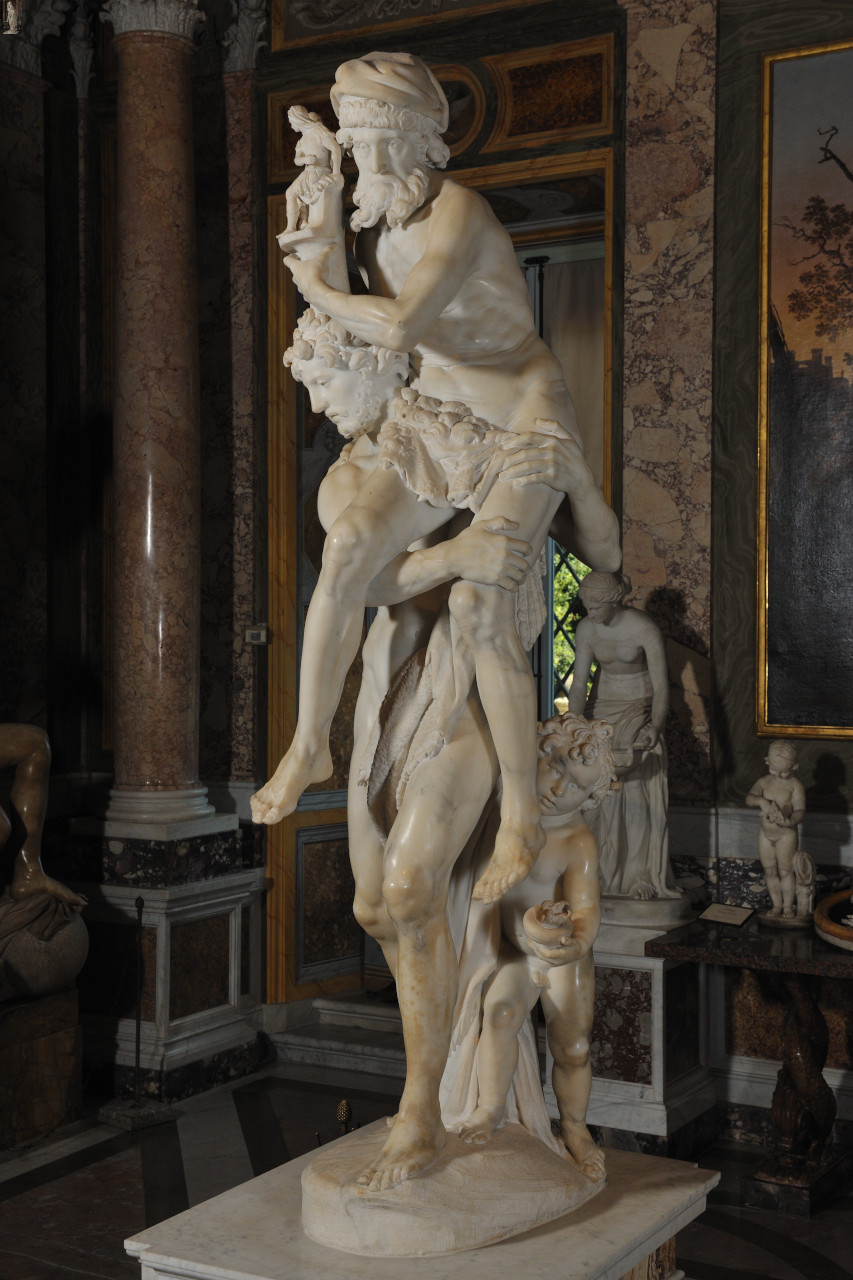
Bernini’s conscientious studies
fire in the borgo
risen christ
bear
Pluto & Persephone- Bernini- (1621-1622)

what Hibbard said about Pluto & Persephone
the texture of the skin, the flying ropes of hair, the tears of Persephone, and above all the yielding flesh of the girl in the clutch of her divine abductor initiate a new phase of sculptural history
Bernini captures the moment of Pluto & Persephone
where the young goddess is taken into the aggressive muscular clutches; she is trying to get away
raptio in Latin means
abduction/ kidnapping
where is it believed that Bernini took inspo from for Pluto & Persephone
late renaissance work found in Florence
Rape of the Sabine Women by Giambologna of 1582
known for its multiple angles
Apollo and Daphne- Bernini- (1622-1625) Image
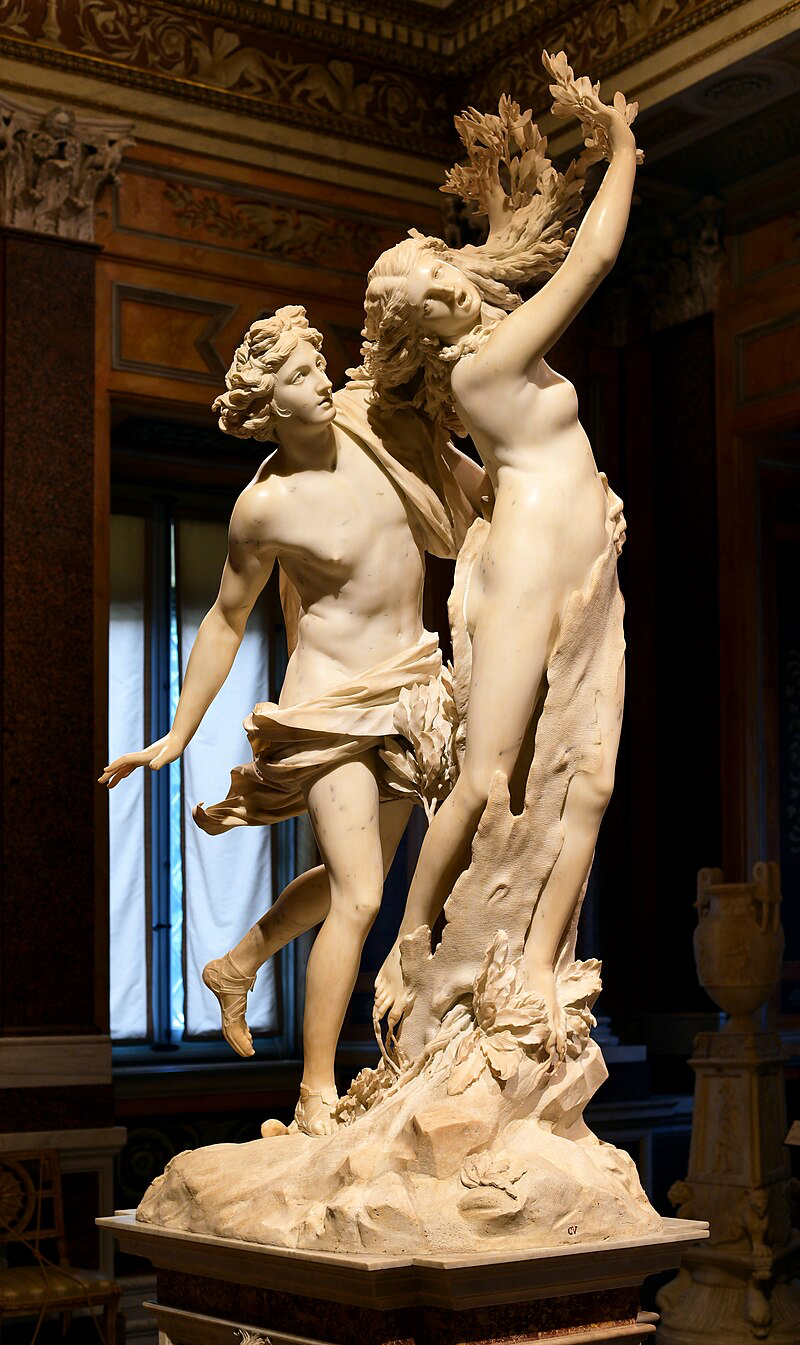
For the Apollo and Daphne-
Apollo’s body is directly to the classical ancient sculpture of the Vatican collection, the Apollo Belvedere
David- Bernini- (1623-1624) Image
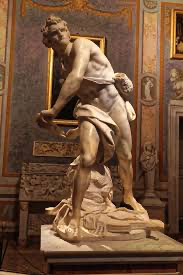
While working on the Apollo & Daphne Bernini simultaneously
began & completed “David” in 7 months
signifigant difference between David (by Bernini) and works of Apollo or Pluto is that
the figure of the adversary is absent
he is alone
David’s grimace
believed to be created thanks to a mirror held by the patron himself, Cardinal Scipone Borghese, for Bernini who carved his own face as the young biblical hero as he tensed up his face to get the exact expression
Portrait busts of Cardinal Scipone Borghese- Bernini- (1632) Image
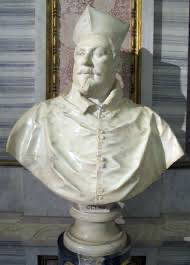
Cardinal Scipone Borghese is not only a precious document portrated by a great artist it is
also milestone in the history of scultpture and one of the finest portraits of all time
Boy with the Basket of Fruit- Caravaggio- (1593) Image

The Sickly Bacchus- Caravaggio- (1594) Image
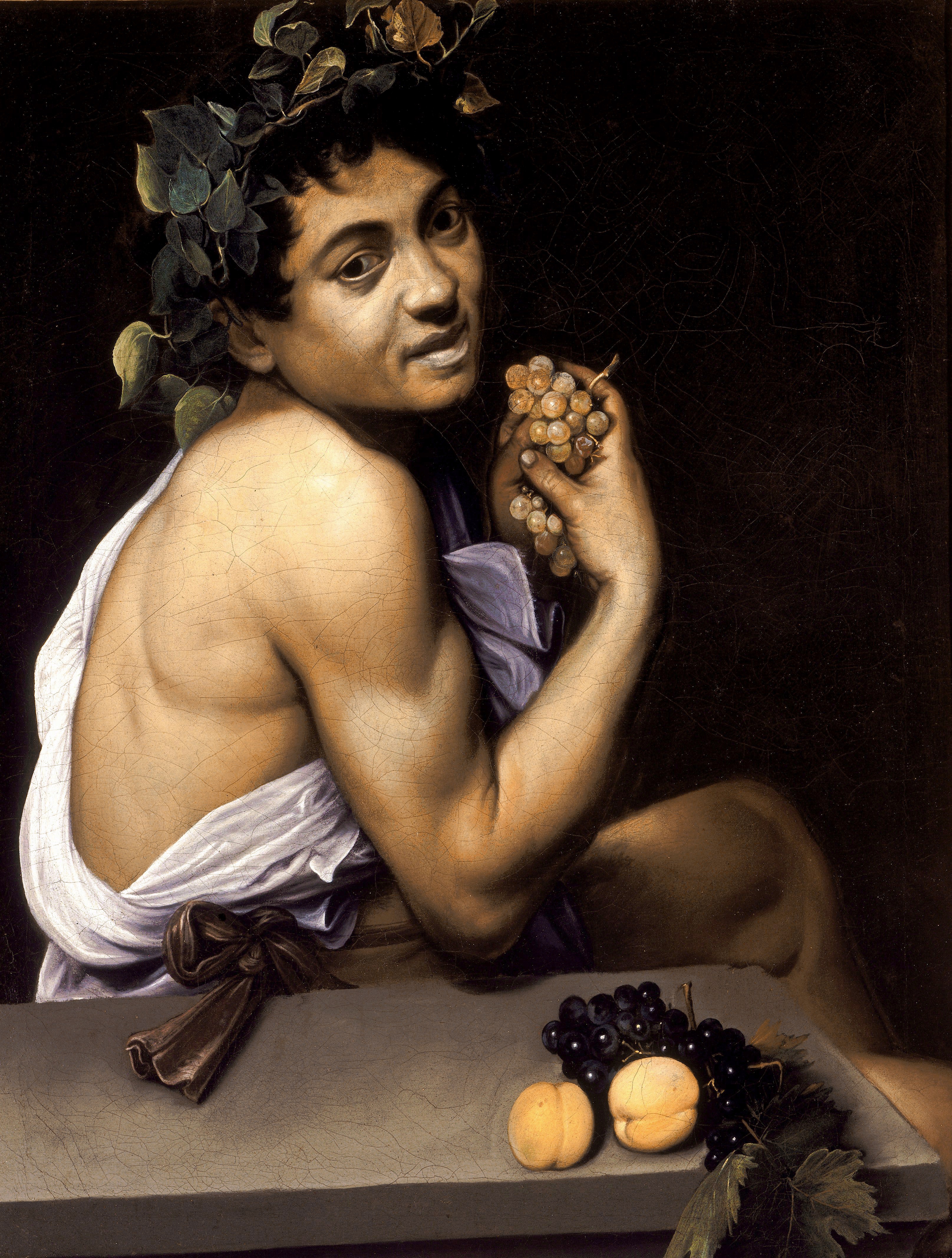
The Sickly Bacchus(1594) & Boy with the Basket of Fruit by Caravaggio(1593):
the secular works and studies of still life and young boys. These works were sponsered by an early patron, Giuseppe Cesari known as the Cavaliere d’Arpino
In the Boy with a Basket we notice a
strong diagonal shadow cast by light apparently entering the room from above, the beginning of Caravaggio’s “cellular light”
Boy with a Basket the fruit is
painted with earthy realism
at edge of picture plane
leans into the viewers space
& there is a plain background of ambiguous space
In The Sickly Bacchus(1594) we see the customary
still life & young man genre
that is in most of Bernini’s earlies works
What are Bernini’s 3 great works in the Borghese Collection
Pluto & Persephone
Apollo & Daphne
David
The Madonna & Child with St. Anne- Caravaggio- (1605/6) Image

The Madonna & Child with St. Anne by Caravaggio is how tall
nearly 10 ft ta;;
In “The Madonna & Child with St. Anne” the figures of Mary and Jesus emerge from an
unreadable space that is dark
yet their bodies are illuminated by a strong light from the left of the painting
“The Madonna & Child with St. Anne” shows
St. Anne as witness to the right
Mary and with Christ
“fruit of her womb”
The doctrine of the Immaculate Conception comes to fruition as 3 figures in their blood relations help to reaffirm such doctrine
The Triton Fountain- Bernini (1642/3) Image

The Triton Fountain is Bernini’s first
free-standing urban fountain for Rome
The Triton Fountain was first of its kind
a sculptural monument like those in private fountains for gardens
now acting as a fountain for a public urban setting
Bernini’s Triton will always be
THE fountain
Bernini was NEVER done archietecture before
Palazzo Barberini
Palazzo Barberini Image
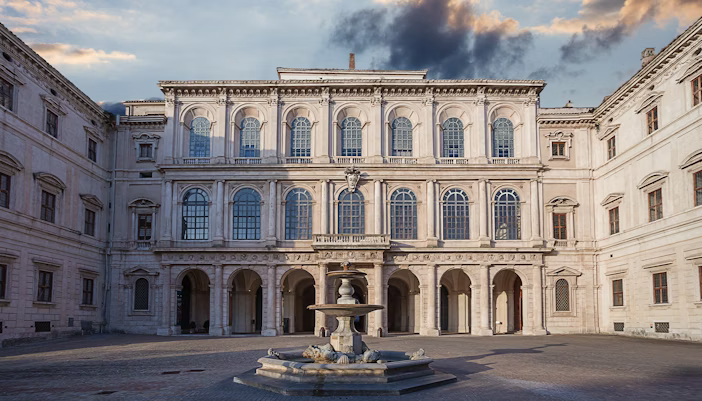
When making Palazzo Barberini, ______________ had hope to be called in as the chief architect for the Palazzo but was passed up for Bernini the “Papal Favorite”
(At this point, Bernini has not exercised his talent as an architect)
Francesco Borromini
Pope Urban VIII said to Bernini
“Your luck is great to see Cardinal Maffeo Barberini Pope, Calaliere (sir/knight referring to Bernini); but ours is much greater to have Cavalier Bernini alive in our pontificate”
who had an unmatched history of artistic patronage (1623-1644)
Pope Urban VIII & Bernini
Square Staircase- Bernini (1630) Image

Helicoidal Staircase- Francesco Borromini-
(1633-1634) Image

Borromini’s staircase is
helicoidal & turns on its rotational axis
Judith Beheading Holofernes- Caravaggio- (1598-1599) Image
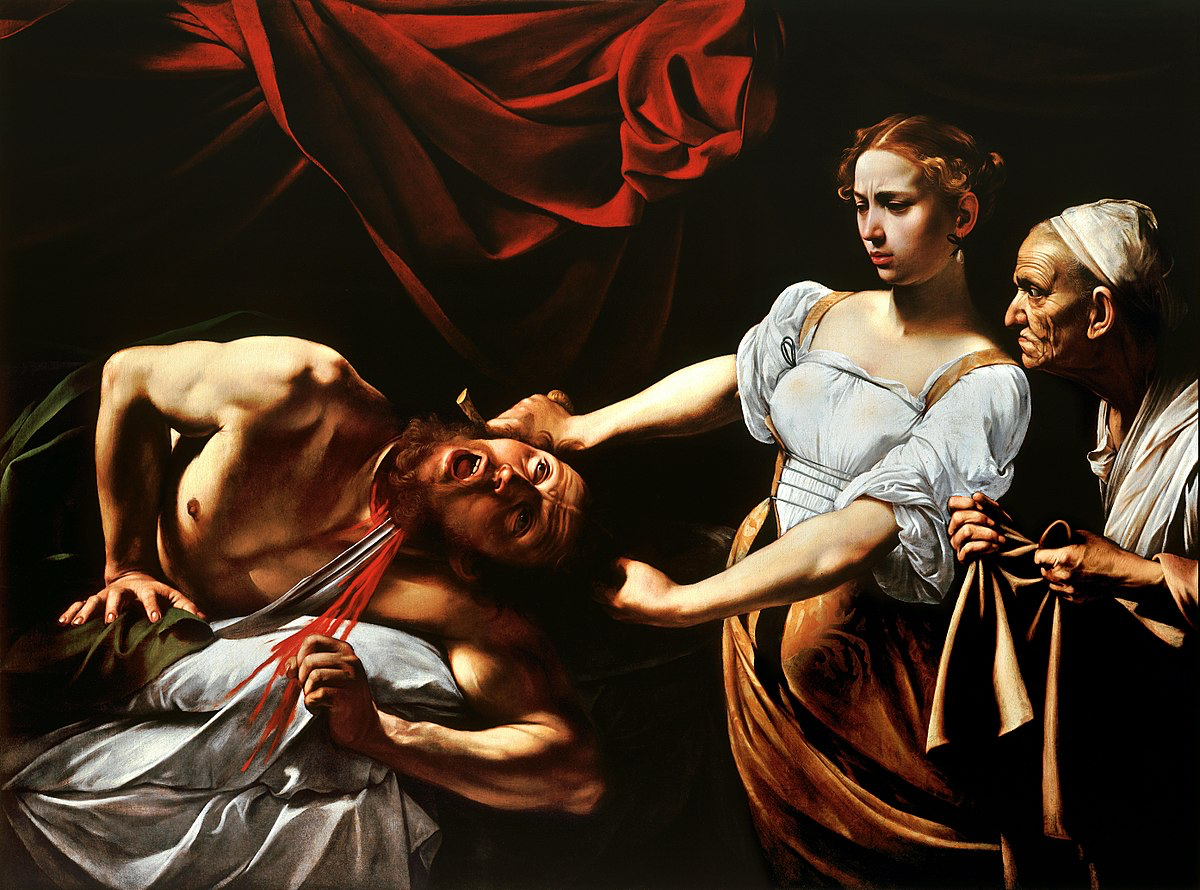
Judith Beheading Holofernes (Caravaggio) overview:
closing in on the 16th century and just under 10 years after he transferred to Rome, Caravaggio began to paint works with
greater drama, cruelty, & violence
Judith Beheading Holofernes was Caravaggio’s
first historical work
Judith & Holofernes had been painted during the 15th century but
never with such extreme and harsh realism
shows exact moment of death
Judith Beheading Holofernes- position perspective:
Caravaggio’s work are often thrust into foreground
however the placement of Judith’s arms and their perspective do not seem to reflect
the motion
sheer weight of the murder she is commiting
Fresco know by three names; what are the names
The Triumph of Divine Providence
Allegory of Divine Providence & the Triumph of Barberini Power
The Triumph of Divine Providence & the Fulfillment of its Purpose under Pope Urban VIII
The fresco known by three names:
The Triumph of Divine Providence
Allegory of Divine Providence & the Triumph of Barberini Power
The Triumph of Divine Providence & the Fulfillment of its Purpose under Pope Urban VIII
was created by?
Pietro Da Cortona (1632-1639)
The Triumph of Divine Providence
Allegory of Divine Providence & the Triumph of Barberini Power
The Triumph of Divine Providence & the Fulfillment of its Purpose under Pope Urban VIII
All titles of this fresco convey the same meaning:
exalt (speak highly of) & legitimize the Papal rule of the House of Barberini
Pietro Da Cortona’s
The Triumph of Divine Providence
Allegory of Divine Providence & the Triumph of Barberini Power
The Triumph of Divine Providence & the Fulfillment of its Purpose under Pope Urban VIII
(1632-1639) Image:
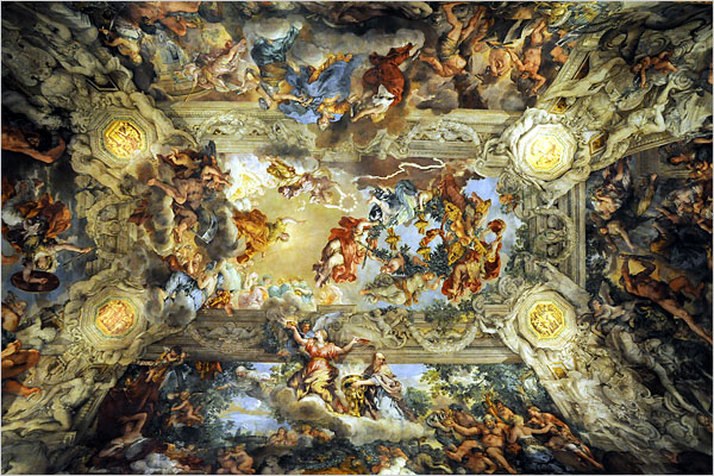
Soon after his election Pope Urban VIII made
his brother & 2 nephews Cardinals
his second brother, a prince
Painting Technique of
The Triumph of Divine Providence
Allegory of Divine Providence & the Triumph of Barberini Power
The Triumph of Divine Providence & the Fulfillment of its Purpose under Pope Urban VIII
was:
quadratura
painting on ceiling or wall to create the illusion of limitless space
there is often painted columns, arches, and architecture that mimics the space below
The Quadratura Technique is
painting on ceiling or wall to create the illusion of limitless space
there is often painted columns, arches, and architecture that mimics the space below
Piazza Navona- “Fountain of the Four Rivers”
the concetto was:
proclaim the universality of the Catholic Church on the 4 main continents
confirm the universal rule of the papacy
celebrate the triumph of Pope Innocent X & the Pamphilj Family
“concetto” means to
convey a definite message
Piazza Navona- “Fountain of the Four Rivers'“- Bernini (1648-1651) Image


Piazza Navona- “Fountain of the Four Rivers” showcases what rivers
Nile (Africa)
Ganges (Asia)
Rio de la Plata (South America)
Danube (Europe)
The Church of St. Agnes (1652-1660’s) is made by
father-son duo Girolamo & Carlo Rainaldi (1652)
Borromini (1653)
Bernini (1660’s)
The Church of St. Agnes (1652-1660’s) Image
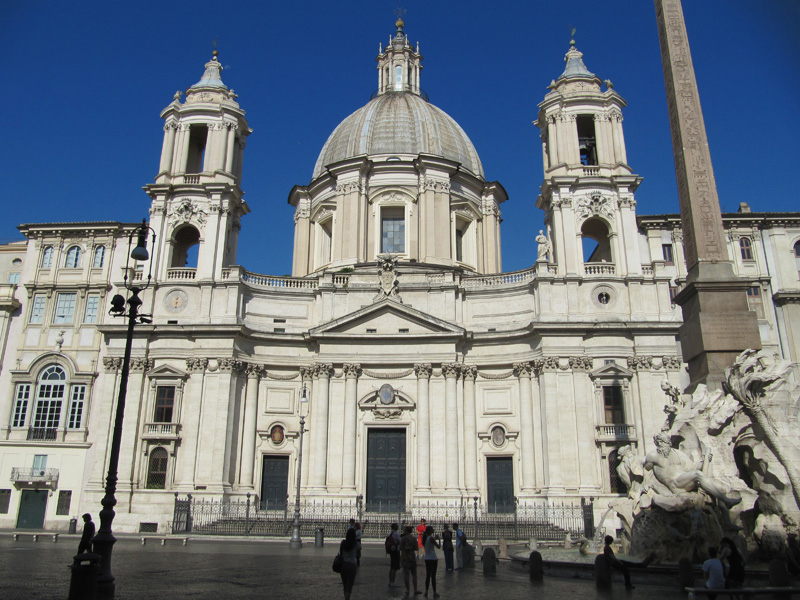
On The Church of St. Agnes the ________ and _______ are reminiscent of earlier projects for St.Peters in the Vatican
facade & dome
Giovan Battista Gauli (or Baciccio) (disciple of Bernini) painted
“Virtues of Christian Life” in the pendentives under the dome of The Church of St. Agnes
The Church of Santa Maria della Pace (St. Mary of Peace) Image

In The Church of Santa Maria della Pace (St. Mary of Peace) the flanking concave walls (like wings) create
interplay with the convex facade which is a frequent Baroque theme in architecture
facade divided into 2 stories
Chiesa di Sant’ Agostino (St. Augustine Church) Image

Cavalleti Chapel- Madonna di Loreto or Madonna of the Pilgrims- Caravaggio (1604) Image
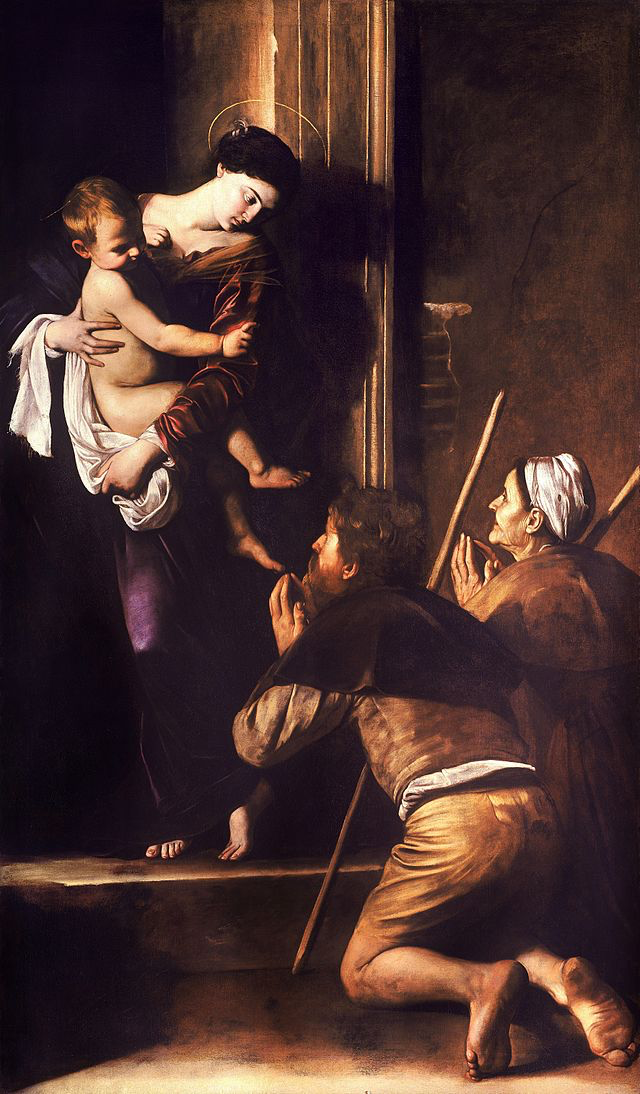
For “Madonna di Loreto or Madonna of the Pilgrims” Caravaggio’s treatment of relgious subjects where he
“humanizes the divine”
is evident in the
realism of the figures
immediacy of the scene
dramatic chiaroscuro
Contarelli Chapel of La Chiesa di San Luigi dei Francesi (St.Louis of the French) was
Caracaggio’s 1st major religious commission (1599)
Caravaggio’s real name is
Michelangelo Merisi
Caravaggio was the town he was born in
Caravaggio’s birth & death
1571- 1610
(16th century- 17th century)
Elements of Caravaggio’s works
naturalism
religious paintings
chiaroscuro
working methods
Caravaggio’s Naturalism:
observation & imitation of real world
used ordinary people as models for religious subjects
The purpose of Caravaggio’s Religious Paintings was to
break down the barriers between spectator & subject